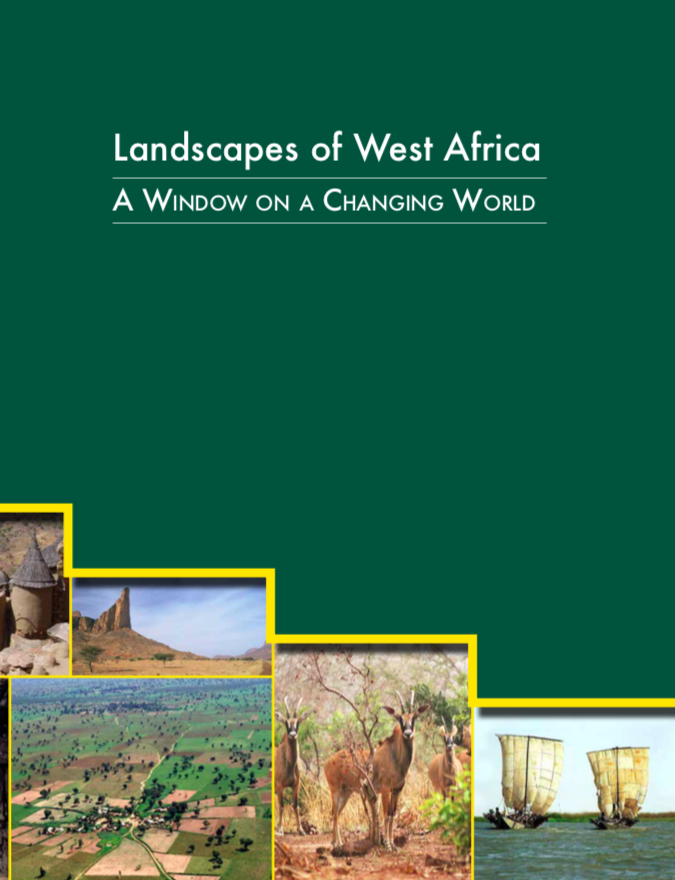Resource information
Landscapes of West Africa, A Window on a Changing World presents a vivid picture of the changing natural environment of West Africa. Using images collected by satellites orbiting hundreds of miles above the Earth, a story of four decades of accelerating environmental change is told. Widely varied landscapes — some changing and some unchanged — are revealing the interdependence and interactions between the people of West Africa and the land that sustains them. Some sections of this atlas raise cause for concern, of landscapes being taxed beyond sustainable limits. Others offer glimpses of resilient and resourceful responses to the environmental challenges that every country in West Africa faces. At the center of all of these stories are the roughly 335 million people who coexist in this environment; about three times the number of people that lived in the same space nearly four decades ago.
This rapid growth of West Africa’s population has driven dramatic loss of savanna, woodlands, forests and steppe. Most of this transformation has been to agriculture. The cropped area doubled between 1975 and 2013. Much of that agriculture feeds a growing rural population, but an increasing fraction goes to cities like Lagos, Ouagadougou, Dakar and Accra as the proportion of West Africans living in cities has risen from 8.3 percent in 1950 to nearly 44 percent in 2015. The people of West Africa and their leaders must navigate an increasingly complex path, to meet the immediate needs of a growing population while protecting the environment that will sustain it into the future. This atlas contributes quantifiable information and meaningful perspective that can help guide West Africa and its people to a more sustainable future.

